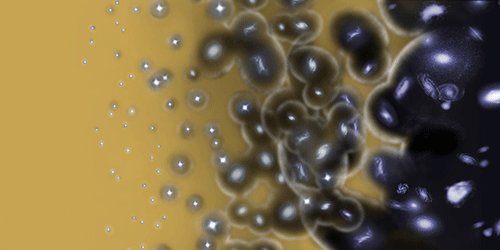A Reionization Filter for the Cosmic Microwave Background
The cosmic microwave background (CMB) contains a lot of information about the early Universe; some might say too much. Certain signals are hard to recover because they are mixed in with others. A case in point is the kinetic Sunyaev-Zeldovich (kSZ) effect, which involves CMB photons scattering off moving ionized gas. A new theoretical study shows how to extract the kSZ signature in CMB data, as well as separate early and late kSZ contributions. The method could provide information about the so-called “reionization epoch,” when the first stars formed and began ionizing much of the matter in the Universe.
Astronomers measure hot and cold spots in the CMB over a wide range of angular scales. On small angular scales (less than 0.1 degrees), these temperature fluctuations come from a mixture of events, such as the kSZ effect and gravitational lensing. Kendrick Smith from the Perimeter Institute for Theoretical Physics, Canada, and Simone Ferraro from the University of California, Berkeley, have devised a way to isolate the kSZ effect. Their method entails first applying a filter to CMB data that retains only small-angle fluctuations. They show that—in this filtered CMB—the kSZ effect has a distinctive non-Gaussian statistical signature that allows it to be isolated from other effects. Moreover, the researchers find that the kSZ contribution from reionization should have an angular dependence that helps it stand out relative to more recent kSZ contributions. If upcoming CMB experiments, like CMB-S4, can detect the kSZ signal, they may begin to probe whether reionization was “patchy,” with certain regions ionizing before others.
This research is published in Physical Review Letters.
–Michael Schirber
Michael Schirber is a Corresponding Editor for Physics based in Lyon, France.





